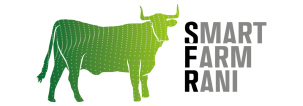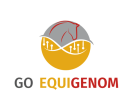Red Alert Operational Group: Operational Group for innovation in habitat management measures and essential requirements of the red-legged partridge as a biological model
- Type Operational group
- Status In progress
- Execution 2024 -2027
- Assigned Budget 120.000,00 €
- Scope Autonómico
- Autonomous community Aragón
All the measures to be implemented with the development of this project (biodiversity islands, study of alternatives to minimize the consumption of sealed seeds, etc.) would also aim to ensure the proper management of natural heritage, spaces and habitats, as well as the species that inhabit them.
The results obtained would have a direct impact on the ZEPA (Special Protection Area for Birds) with code ES0000295 – Sierra de Alcubierre, as the “El Vedado bajo del Horno” estate belongs to this environment of the Natura 2000 Network of Aragon. As this is an experimental project, two more trial areas will be added to this main area in Gallocanta and Belchite (Zaragoza), within the protected areas of the ZEPA "Cuenca de Gallocanta" (ES0000017) and the ZEPA "Estepas de Belchite - El Planerón - La Lomaza" (ES0000136), respectively.
Research is being conducted to try to reduce the consumption of coated seeds by steppe birds. Adult red-legged partridges alone (not counting other agro-steppe birds) consume 50 grams of grain per day. The 2021 European Red List of Birds estimates 2.71 million breeding individuals in Spain. This number is possibly much higher, since, according to the 2021 Forest Statistics Yearbook of the Ministry for Ecological Transition and the Demographic Challenge, 2.5 million individuals were captured (and hunting legislation itself requires sustainable harvesting of huntable species such as the red-legged partridge).
The various activities planned to develop the predictive model that will lead to a manual of good agricultural practices for managing hay meadows in the Pyrenees are:
- Fieldwork design and selection of control farms and meadows.
- Forage sampling in pastures to obtain data on production, harvest extractions, and silage yield.
- Sampling of manure and slurry from livestock farms.
- Soil sampling from meadows.
- Analysis of forage, soil, manure and slurry samples.
- Calibration of the predictive model.
- Simulations of the predictive model and development of the best practices manual based on the analysis of all the results obtained.
Among the most widely used game management measures linked to the project, the following stand out (on which we will state operational comments linked to the project): The placement of water troughs and feeders, as far as we know, does not seem to be an element widely used by partridges, but it is by other species (Casas et al. 2006).
However, studies on the use of water troughs by birds, including the red-legged partridge itself, are very scarce, to the point that the hunting sector itself acknowledges that the usefulness or necessity of these artificial supplies is far from clear (Díaz 2006). Furthermore, artificial supplements of water and food could even have negative consequences for the red-legged partridge or other species, as feeders and waterers constitute points of dissemination and transmission of diseases (Vicente et al. 2007 and Cardoso 2007).
Habitat management can only be viable when hunters can control land management, a situation that is very marginal in Aragon. Therefore, it is more feasible and viable to reorient facilities currently managed by hunters, such as water troughs, to generate beneficial microhabitats for partridges, providing insects during the partridge breeding season (June–August) and shelter and cool air during the summer. Along these lines, it is also worth highlighting the "biodiversity islands" with measures subsidized by the current CAP; and this could serve to establish synergies between farmers and hunters who manage and harvest game on their land.
In general, if the potential results obtained are positive, they would be highlighted as significant innovative advances in the conservation of the red-legged partridge. Similarly, the direct economic benefits for hunting rights holders and hunting reserve managers who use this species for hunting purposes would be highlighted (in reserves with a good partridge population, the value of hunting income increases significantly); these currently generate around €260 million, according to the Economic Impact and Analysis of Hunting Expenditure in the Autonomous Community of Aragon prepared by Deloitte and FARCAZA in 2015.
The modernization of traditional game management systems through innovation in research and development for the generation of microhabitats or "biodiversity islands" could mean reorienting the financial efforts made by hunting groups to maintain watering points toward more effective practices for biodiversity conservation and improving the native red-legged partridge population, which is estimated at around €15 million nationally according to the Economic and Social Impact Assessment of Hunting in Spain conducted by Deloitte and the Artemisan Foundation in 2017. Additionally, I would highlight the availability of a guide to available technical improvements for the implementation of "biodiversity islands" by farmers and ranchers, which could, in some cases, be adapted to eco-regime practices.
- Coordinator/entity name: Aragonese Hunting Federation
- Postal address: Pl. Canal Imperial, 2, 50007, Zaragoza
- Coordinator/entity email: interventor@farcaza.es
- Telephone: 696211641
- Federación Aragonés de Caza
- SEO BIRLIFE (seo@seo.org)
- Federación Aragonés de Caza





